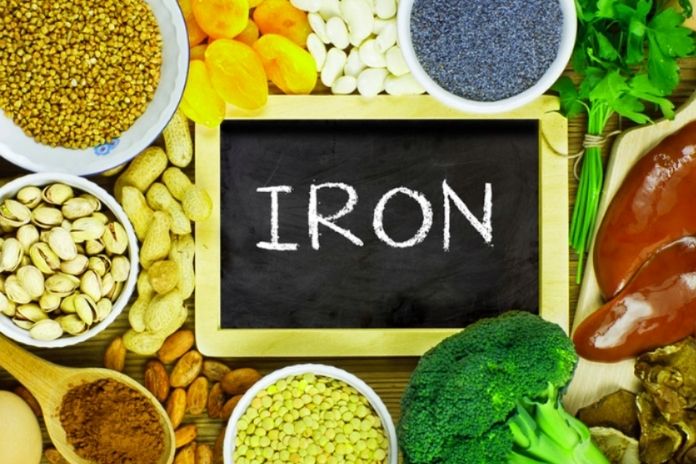Although it is in low concentrations, iron plays a significant role in the body. Above all, it is indispensable for the supply of energy in the cell.
In A Nutshell:
We need the trace element iron above all for the vital transport of oxygen in the body. Iron deficiency is associated with specific general symptoms but also affects, for example, muscles, skin, hair, nails and mucous membranes. The best source of iron is meat. Vegetarians should specifically use other sources and adjust their diet to optimal iron utilization.
What Is Iron
It is a trace element. Trace elements only make up a negligibly small proportion of our body weight. Nevertheless, they are vital for many bodily functions. Inadequate supply can lead to deficiency symptoms, and metabolic disorders can lead to overloading of the body.
Iron is essential for cell formation, but above all for “cell respiration”. This means that the oxygen we take in through the lungs is bound to the red blood pigment hemoglobin with its help, distributed through the blood throughout the body and used in the cells to generate energy. This also applies to the muscles: myoglobin, the “muscle hemoglobin”, binds iron particularly effectively and thus supplies the muscles with plenty of oxygen.
Why Is The Iron Concentration In Blood Serum Measured?
Since it plays a fundamental role in our body and both deficiency and overload (which rarely occurs) cause damage, the doctor will check the iron concentration in the serum if necessary, possibly together with other values that make a good assessment of the iron metabolism enable. These are, for example, transferrin and ferritin.
An iron deficiency can manifest itself through paleness, tiredness and lack of drive, skin and mucous membrane diseases, brittle nails and disorders of nail and hair growth, in children also through growth disorders, and can lead to complications during pregnancy. Last but not least, a changed blood count reflects the deficit.
Possible Causes For A Too Low Iron Concentration:
Bleeding, for example, increased or frequent menstruation, chronic inflammation, kidney dysfunction, chronic inflammatory bowel diseases, such as Crohn’s disease, celiac disease (also called sprue, is associated with an intolerance to gluten, the gluten in wheat or other grains, and possibly impaired nutrient absorption). The need for iron increases during pregnancy and breastfeeding, as the unborn child, also needs the vital substance for blood formation. If you have cancer, iron levels can also be too low.
Symptoms That Indicate An Excessive Iron Concentration:
Diarrhoea, vomiting, bloody diarrhoea or an increase in the number of white blood cells.
Overdosing on iron supplements, especially iron compounds injected into the bloodstream, can lead to extreme iron elevations. Frequent transfusions of so-called erythrocyte concentrates, which are unavoidable in hereditary blood formation disorders, for example, can lead to a pathological overload with iron. A congenital iron metabolism disorder, hemochromatosis, is associated with increased iron absorption in the intestine. The excess iron is deposited in the liver, among other things. Without consistent therapy, the overloaded organs fail in the long run.
ALSO READ: IRON-RICH FOODS:8 FOODS THAT CONTAIN MORE IRON THAN A STEAK

